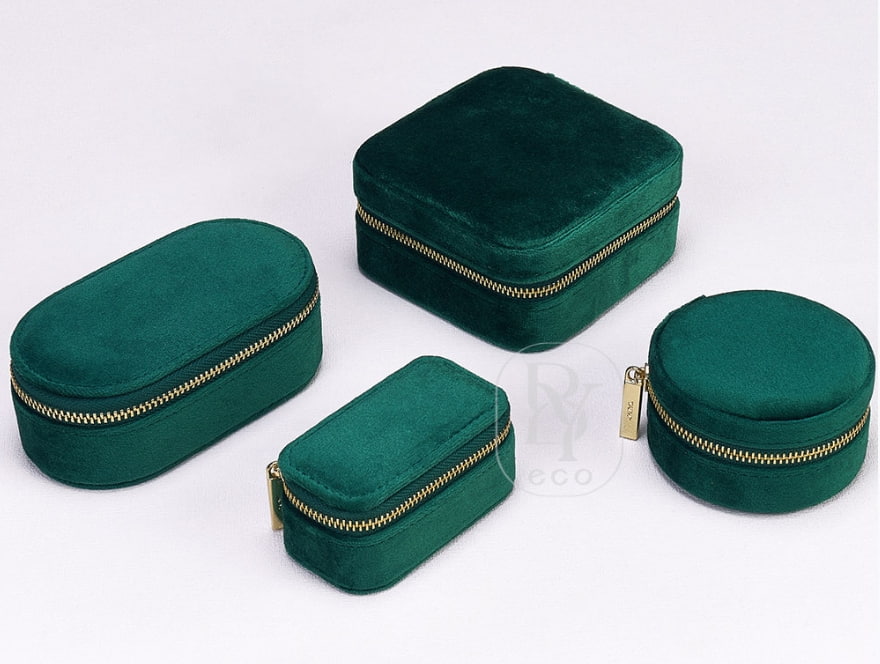You can share
- Share to Facebook
- Share to Google+
- Subscribe to our
- Share to Linkedin
- Share to Twitter

Every jewelry brand needs jewelry packaging boxes. It is crucial to choose a qualified jewelry packaging box manufacturer with which to cooperate. At the same time, the texture, design, and functionality of the packaging box directly determine their judgment of the value of jewelry. So, how to choose a jewelry packaging box? What value can it create for jewelry brands?
Modern jewelry packaging boxes are no longer just containers. At the protection level, high-density corrugated cardboard (usually more than 3mm thick) builds a compressive foundation, and is waterproof and moisture-proof with surface lamination technology. The lining uses flocking or velvet fabrics of more than 300g/㎡ to ensure zero friction contact with jewelry. Professional packaging can reduce the transportation damage rate by more than 90%, which is especially important for fragile gem-inlaid products.
At the brand value level, customized packaging becomes a mobile billboard. The brand logo is presented through a hot stamping or embossing process with an accuracy of 0.1mm, and matched with exclusive Pantone colors (matching degree exceeds 95%), which significantly improves recognition. Market research shows that 73% of consumers are willing to pay a 10%-25% premium for exquisite packaging. When matte touch paper or wood grain specialty paper is used, the packaging grade can jump two levels.
The unboxing experience has been the focus of competition in recent years. Detailed designs such as magnetic slow-drop box lid, ribbon closure, and embedded LED lights transform the unboxing process into a ritual experience. The jewelry care guide or thank-you card included in the box can effectively enhance user stickiness.

(1) Material selection: It is necessary to balance protection and brand tone. Special art paper is recommended for high-end series, and its unique texture is suitable for limited edition packaging; imitation leather PU material can be selected for light luxury line, which has both texture and cost advantages; environmentally friendly series tends to be recycled cardboard (containing recycled fiber content ≥80%); collectible jewelry is suitable for solid wood or metal boxes, although the cost is higher, it can convey the value of inheritance.
(2) The lining process determines the protection level. EVA mold opening (accuracy ±0.05mm) ensures that each piece of jewelry is accurately positioned to avoid displacement during transportation. The buffer layer must use a high-elastic sponge with a density of more than 30kg/m³, covered with silk or satin fabric to prevent scratches. Multi-piece packaging must be equipped with a physical separation layer to prevent jewelry of different hardness from damaging each other.
(3) Surface technology is the key to visual communication. Three-dimensional hot stamping (thickness ≥0.3mm) enhances the sense of luxury, and lasers can produce anti-counterfeiting marks. The embossing depth is controlled between 0.15 and 0.3mm. Going too deep can easily cause the paper to break. Environmentally friendly technology has become the industry standard. Water-based ink can reduce volatile organic compound emissions by 70%, and solvent-free lamination technology can avoid chemical pollution.
Successful customization begins with in-depth demand analysis. It is necessary to obtain the precise size of the jewelry through 3D scanning (accuracy 0.01mm) and conduct environmental simulations such as vibration testing and temperature and humidity cycles.
The design phase requires two tracks in parallel: structural engineers provide at least three anti-seismic solutions, such as suspended inner supports or spring brackets; graphic design requires the application of color psychology, dark-colored packaging appears luxurious (such as burgundy red), and light-colored packaging (Tiffany blue) conveys a sense of freshness.
Production quality control determines the quality of the finished product. Each batch of raw materials needs to be tested for paper weight (error ≤±3%) and color difference (ΔE≤1.5). The production line should have 12 quality inspection processes, focusing on checking die-cutting accuracy and bonding strength. The final packaging must pass the ISTA 3A transportation test standard to simulate the harsh environment of global logistics.
Capacity assessment needs to match brand planning. Manufacturers with a monthly output of less than 10,000 pieces are suitable for start-up brands, 10,000-50,000 pieces meet the needs of medium-sized enterprises, and more than 50,000 pieces of production capacity correspond to large jewelers. It is recommended to choose medium-sized, high-quality manufacturers to balance flexibility (support small batch customization) and stability (on-time delivery rate should be ≥98%).
The use of standard box types can save 30% of mold costs, and plate printing technology can reduce printing costs by 15%-25%. The off-season stocking strategy can save 12% of warehousing expenses, but sales must be accurately predicted to avoid inventory backlogs.
As the jewelry industry becomes more homogeneous, packaging has become the core battlefield for brand differentiation. Brands that integrate environmental protection concepts and smart technology into packaging design are gaining emotional recognition from a new generation of consumers. Are you ready to make the packaging box an amplifier of brand value?